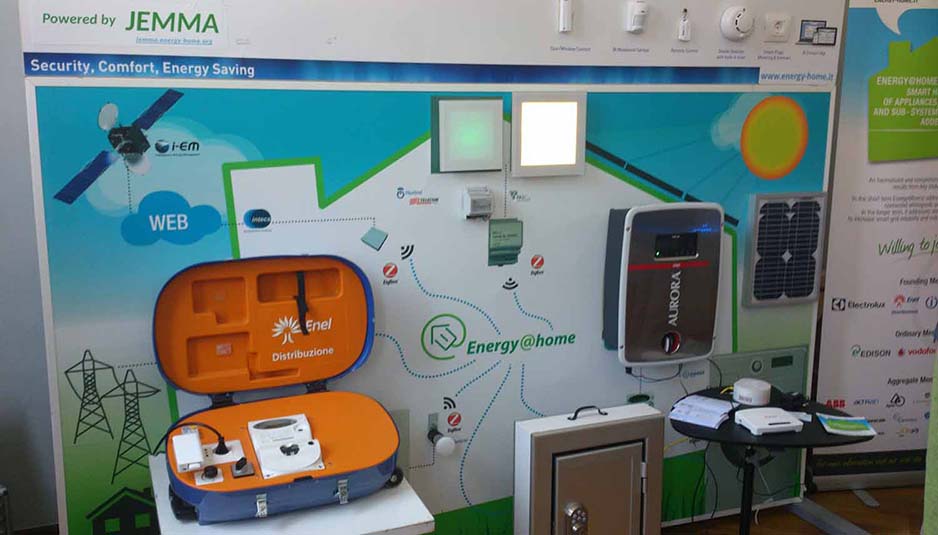House Jasmina: World’s First Smart Energy House by Arduino – Part III

Lorenzo Rubino - CuE
Presentation
Last article continued the description of House Jasmina, a unique example of a connected apartment with open-source ideals, promoted by Arduino and curated by the futurist writer Bruce Sterling. Space of confrontation, an incubator for concepts and examples, created for design and business in the field of the Internet-of-Things (IoT). Now the description continues for the third and last time.
Energy Control
Lorenzo Rubino – CuEEnergy@home (E@h) is a no-profit association where industries from different sectors collaborate at developing and promoting technologies and services for the smart home and for the energy efficiency based upon device-to-device communication. In the short term, E@h addresses post-meter value added services, connected white goods and smart home services. In the longer term, it addresses demand side flexibility as a resource to increase smart grid reliability and reduce the energy bill of smart consumers. The approaches are:
- Openness: participation is open and technical documents are public available
- Interoperability: technical solutions enable interoperability among different vendors, both device-to-device communication and sub-system to sub-system communication
- Internationality: E@h targets the global market, through an effective and proactive collaboration with other bodies and standard organizations.
So far, the main achievements are:
- It is submitted to WG 21 of IECT-TC 57 for inclusion in the technical report IEC 62746-2.
- It is independent of the underlying communication protocol and extends the IEC Common Information Model and the IEEE P2030.5 standard (SEP2). UML, WADL and XSD schemas are available on the website.
- JEMMA. Open-source (LGPL) framework that implements the E@h specifications. It allows the monitoring of the storage batteries and all the smart household electrical appliances.
The GreenCom Smart Energy Management System makes possible to measure, monitor and manage the local energy demand though intelligent control of energy consuming devices as well as distributed energy generating and storage installations. By collecting, aggregating and analyzing real-time or near real-time data from the devices, the system provides demand and generation forecasts and decision support. Based on individual contracts with the consumer/prosumer, determining flexibility load and control, a more reliable customer demand is achieved and enforced through intensive grid monitoring and automation.
The Decision Support Dashboard offers energy consumption and generation information (current and historical conditions) to Distribution System Operators (DSO) and Aggregators. Based on the information, the operator can decide on requesting load-shifting actions in critical parts of the power grid to prevent overloads. Upon receiving a request, the Aggregator uses the dashboard to estimate the possibilities of shifting load based on the grid structure and the contracts with households.
One of the key enablers of a smart grid is the engagement and flexibility of the consumer. To create awareness of own energy consumption and motivate change in energy behavior, the GreenCom consumer solution enables the costumer to follow the historical and current energy consumption of the households and selected devices and compare it with other households. Any savings are awarded with green trees.
